B M Sharma Solutions for Chapter: Capacitor and Capacitance, Exercise 2: DPP
B M Sharma Physics Solutions for Exercise - B M Sharma Solutions for Chapter: Capacitor and Capacitance, Exercise 2: DPP
Attempt the free practice questions on Chapter 4: Capacitor and Capacitance, Exercise 2: DPP with hints and solutions to strengthen your understanding. Chapterwise/Topicwise Daily Practice Problems (DPP) Electrostatics and Current Electricity JEE Main & Advanced solutions are prepared by Experienced Embibe Experts.
Questions from B M Sharma Solutions for Chapter: Capacitor and Capacitance, Exercise 2: DPP with Hints & Solutions
Three plates , and , each of area , have separation between and and between and . The energy stored when the plates are fully charged is
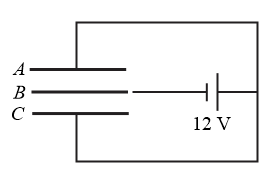
Two capacitors and are connected in series with a battery as shown in the figure. When the switch is closed and the two capacitors get charged fully, then
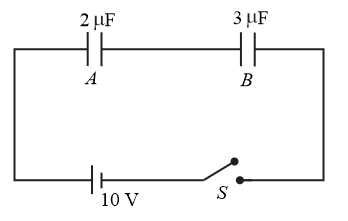
Two identical capacitors have the same capacitance . The equivalent capacitance between and is
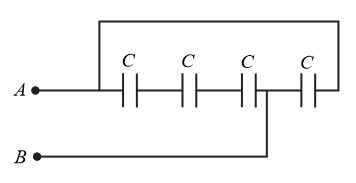
Figure shows two capacitors connected in series and joined to a battery. The graph in figure shows the variation in potential as one moves from left to right on the branch containing the capacitors, if
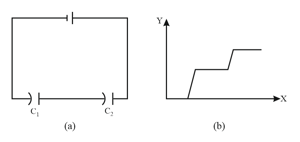
In the following diagram, the charge and potential difference across capacitance will be, respectively
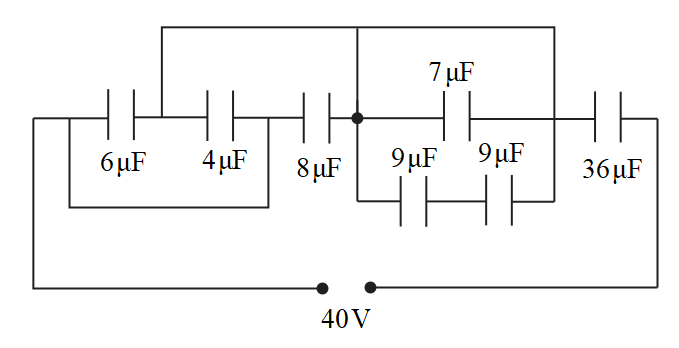
Find equivalent capacitance between and
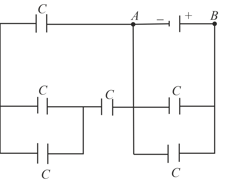
In the adjoining figure are shown three capacitors and joined to a battery. The correct condition will be (symbols have their usual meanings)
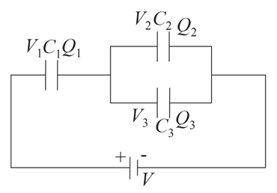
and are large conducting plates kept parallel to each other. and are fixed. Plates and , connected to each other by a rigid conducting rod, can slide over frictionless rails as shown. Initially, the distance between plates and is the same as that between plates and . If now, the rod (along with plates and ) is slightly moved towards the right, the capacitance between the terminals and

